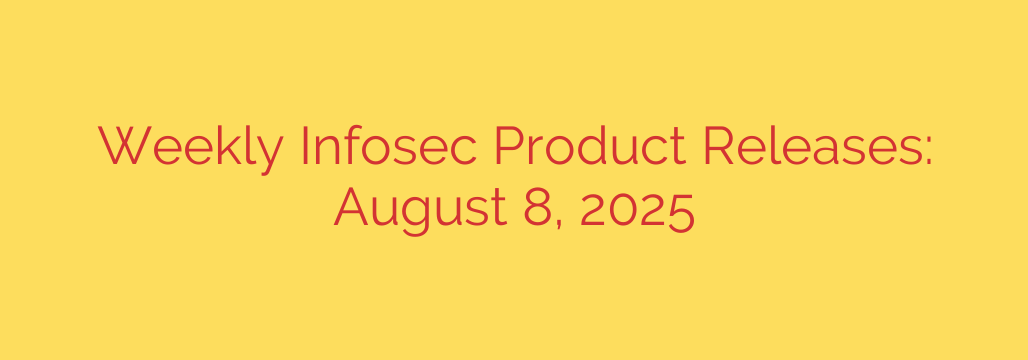
Next-Gen Cyber Defense: Unpacking the Latest Tools to Secure Your Digital Assets
In the relentless cat-and-mouse game of cybersecurity, staying one step ahead of attackers isn’t just an advantage—it’s a necessity. As digital threats grow in sophistication, the tools we use to defend our networks, data, and infrastructure must evolve at an even faster pace. Recently, the cybersecurity landscape has seen a wave of innovation aimed at shifting organizations from a reactive to a proactive security posture.
Let’s explore some of the most significant advancements designed to fortify your defenses against the challenges of today and tomorrow.
The Rise of Predictive Threat Intelligence with AI
For years, security teams have relied on threat detection systems that raise an alarm after suspicious activity has occurred. The new frontier is predictive security, powered by advanced Artificial Intelligence (AI) and Machine Learning (ML).
These next-generation platforms are moving beyond simple pattern matching. They analyze vast datasets of global threat activity, network traffic, and user behavior to identify precursor activities and potential attack vectors before they can be exploited.
Key capabilities include:
- Proactive Threat Hunting: Instead of waiting for an alert, these systems continuously and autonomously hunt for indicators of compromise (IOCs) that are too subtle for human analysts to spot.
- Predictive Analytics: By modeling attacker behaviors, these tools can forecast the most likely targets within your network and recommend specific hardening measures to preempt an attack.
- Automated Response Orchestration: When a high-confidence threat is predicted, the system can automatically implement defensive measures, such as isolating a device, blocking an IP address, or revoking credentials, dramatically reducing response times.
Unifying Cloud Security and API Protection
The rapid adoption of cloud computing and microservices has created a sprawling and complex attack surface. Security teams often struggle with separate tools for managing cloud security posture (CSPM), application security, and API security, leading to critical visibility gaps.
A major trend is the emergence of unified platforms that provide a single, holistic view of risk across the entire cloud-native ecosystem. These tools connect the dots between a misconfigured cloud service, a vulnerable application container, and an exposed API endpoint.
This unified approach delivers:
- Complete Attack Surface Visibility: Gain a comprehensive inventory of all cloud assets, code repositories, and APIs, including undocumented or “shadow” APIs that often fly under the radar.
- Context-Aware Risk Prioritization: The platform can identify which vulnerabilities pose the greatest actual risk by correlating a software flaw with its exposure via a public-facing API and its access to sensitive data.
- Streamlined Remediation: By showing the full attack path, these tools provide developers and security teams with clear, actionable guidance on how to fix the root cause, not just the symptom.
Zero Trust Comes to Operational Technology (OT)
For too long, the Operational Technology (OT) that powers our critical infrastructure—from manufacturing plants to energy grids—has been a weak link in cybersecurity. These environments, once “air-gapped,” are now increasingly connected to IT networks, making them prime targets for disruptive attacks.
The latest security innovations are finally bringing the principles of Zero Trust to the complex world of OT and Industrial Control Systems (ICS). Unlike traditional perimeter security, a Zero Trust model assumes no user or device is inherently trustworthy, requiring strict verification for every access request.
Key features of modern OT security solutions include:
- Industrial Network Micro-segmentation: These tools allow you to create granular security zones around critical industrial assets, preventing an intruder from moving laterally across the OT network.
- Asset-Specific Access Policies: Implement policies that ensure a specific user can only perform pre-approved actions on a specific piece of industrial equipment during a scheduled maintenance window.
- Continuous Monitoring and Anomaly Detection: By learning the normal communication patterns of industrial protocols, these systems can instantly detect and block abnormal commands that could disrupt or damage physical processes.
Actionable Steps to Bolster Your Defenses Now
While cutting-edge tools are powerful, fundamental security hygiene remains crucial. Here are a few practical steps you can take today to improve your security posture:
- Audit Your Access Controls: Regularly review who has access to what. Implement the principle of least privilege, ensuring users and systems only have the minimum permissions necessary to perform their functions.
- Map Your Digital Attack Surface: You can’t protect what you don’t know you have. Conduct a thorough discovery process to identify all internet-facing assets, including cloud services, APIs, and legacy systems.
- Validate Your Incident Response Plan: Don’t wait for a real crisis. Run tabletop exercises and simulations to test your team’s ability to respond to different types of security incidents.
- Prioritize Patch Management: Unpatched vulnerabilities remain one of the most common entry points for attackers. Implement a robust process for identifying and remediating critical vulnerabilities quickly.
The future of cybersecurity is defined by intelligence, integration, and a proactive mindset. By understanding these emerging technologies and reinforcing foundational security practices, organizations can build a more resilient defense capable of withstanding the sophisticated threats of the modern era.
Source: https://www.helpnetsecurity.com/2025/08/08/new-infosec-products-of-the-week-august-8-2025/








